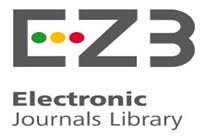IJSEA Archive (Volume 5, Issue 3)
International Journal of Science and Engineering Applications (IJSEA) (Volume 5, Issue 3 May 2016)
Improving Security Levels In Automatic Teller Machines (ATM) Using Multifactor Authentication
Keywords: PIN and Fingerprint-Based; Authentication; Security; Verification; ATM; Verification; Multifactor
A wide variety of systems need reliable personal recognition system to either authorize or determine the identity of an individual demanding their services. The goal of such system is to warrant that the rendered services are accessed only by a genuine user and no one else. In the absence of robust personal recognition schemes, these systems are vulnerable to the deceits of an imposter. The ATM has suffered a lot over the years against PIN theft and other associated ATM frauds due to its traditional authentication mode (PIN). In this paper, we proposed a multifactor (PIN and Fingerprint) based authentication security arrangement to enhance the security and safety of the ATM and its users. The proposed system demonstrates a three tier design structure. The first tier is the verification module, which concentrates on the enrollment phase, enhancement phase, feature extraction and matching of the fingerprints. The second tier is the database end which acts as a storehouse for storing the fingerprints of all ATM users’ preregistered as templates and PIN as text. The last tier presents a system platform to relate banking transactions such as balance inquiries, mini statements and withdrawal. Microsoft windows 8 was used as an operating system platform for the implementation phase, with C# programming language being the front-end development and SQL server 2010 as backend. The application evaluation was based on False Rejection Rate (FAR), False Acceptance Rate (FAR), Average Matching Time (AMT) and the Total Error Rate (TER) conducted, which show the security and reliability of the proposed system for ATM users authentication and verification.
1. Adams, A. & Sasse, M. A., 1999. Users are Not the Enemy. Commun.. ACM 42, 12, pp. 40-46.
2. Akinyemi, I., Omogbadegun, Z. & Oyelami, O., 2010. Towards Designing a Biometric Measure for Enhancing ATM Security in Nigeria EBanking System.. International Journal of Electrical & Computer Sciences IJECS-IJENS 10, pp. 68-73.
3. Anand, D. A., Dinesh, G. & Naveen, H. D., 2013. A Reliable ATM Protocol and Comparative Analysis on Various Parameters with other ATM Protocols. International Jouranl of Communication and Computer Technologies (IJCCT), ISSN: 2278-9723, 01(56), pp. 192-197.
4. Batiz-Lazo, B. & Barrie, . A., 2005. The business and technology history of automated teller machine in the UK. London, Queen Mary University, pp. 1-10.
5. Das, S. & Jhunu, D., 2011. Designing a Biometric Strategy (Fingerprint) Measure for Enhancing ATM Security in Indian E-Banking System. International Journal of Information and Communication Technology Research, pp. 197-203.
6. Gunn, L., 2010. European ATM crime report. Technical Report 1.2, s.l.: European ATM Security Team (EAST),.
7. Hirakawa, Y., 2013. Random Board: Password Authentication Method with Tolerance to Video-Recording Attacks. International Journal of Innovation, Management and Technology, Vol. 4, No. 5, pp. 455-460.
8. Iwasokun, G. B. & Akinyokun, O. C., 2013. A Fingerprint-based Authentication Framework for ATM Machines. Journal of Computer Engineering & Information Technology, pp. 1-8.
9. Jermyn, I. et al., 1999. The design and analysis of graphical passwords.. s.l., USENIX Association, pp. 1-1.
10. Lalzirtira, 2013. Graphical User Authentication, India: Department of Computer Science and Engineering National Institute of Technology Rourkela.
11. Luca, A., 2011. Designing Usable and Secure Authentication Mechanisms For Public Spaces (Doctoral dissertation, lmu), s.l.: s.n.
12. Manish, . M., Ajit , S. K., Thakur, S. S. & Sinha, D., 2011. Secure Biometric Cryptosystem for Distributed System. International Journal Communication & Network Security (IJCNS), Volume-I(Issue-II), pp. 28-32.
13. Modernghana, 2013. Modernghana. [Online]
Available at: http://www.modernghana.com/news/463043/1/hackers-steal-45-million-in-atm-card-scam-federal.html
[Accessed 10 June 2015].
14. Mohammed, L. A., 2011. Use of biometrics to tackle ATM fraud.. Malaysia,, IACSIT Press, Kuala Lumpur, pp. 331-335.
15. Mohsin, K., Saifali, K., Sharad, O. & Dr.D.R.Kalbanded, 2015. Enhanced security for ATM machine with OTP and Facial. s.l., Elsevier B.V., pp. 390-396.
16. Myo, N., 2009. Fingerprint Identification Based on the Model of the Outer Layers of Polygon Subtraction. International Conference on Education Technology and Computer, p. 201 – 204.
17. Ndife, .. A., Ifesinachi, .. E., Anthony, .. O. & Davies, .. ,., 2013. An Enhanced Technique in ATM Risk Reduction using Automated. Volume No.4, 06 June , pp. 1132-1138.
18. Obour, S. K., 2013. [Online]
Available at: http://graphic.com.gh/news/general-news/8459-gcb-confirms-money-theft-from-atm-but-says-amount-is-lower-than-gh-3-million.html
19. Passfaces, Corporation, 2005. [Online]
Available at: http://www.realuser.com/enterprise/about/about_passfaces.htm
[Accessed 9 July 2015].
20. Rasiah, D., 2010. ATM Risk Management and Controls. European Journal of Economics, Finance and Administrative Sciences , 21, , 2014 January.pp. 161-171.
21. Ratha, N., Connell, J. & Bolle, R., 2001. Enhancing Security and Privacy in Biometrics-based Authentication Systems. IBM Systems Journal, vol. 40, no. 3, pp. 614-634.
22. Roth, V., Richter, K. & Freidinger, R., 2004. A Pin-Entry Method Resilient Against Shoulder Surfing. pp. 236-245.
23. Sanjay, S. G. et al., 2014. ATM Transaction Security System Using Biometric Palm Print Recognition and Transaction Confirmation System. International Journal Of Engineering And Computer Science, pp. 5332-5335.
24. Santhi, B. & Kumar, R., 2012. Novel Hybrid Technology in ATM Security Using Biometrics. Journal of Theoretical and Applied Information Technology, pp. 217-223.
25. Saropourian, B., 2009. A new approach of finger-print recognition based on neural network," Computer Science and Information Technology, 2009. ICCSIT 2009. ICCSIT 2009. 2nd IEEE International Conference , pp. 158-161.
26. Subh , M. & Vanithaasri , S., 2012. A Study on Authenticated Admittance of. International Journal of Advances in Engineering & Technology 4, pp. 456-463.
27. Takada, . T., 2008. FakePinter: The authentication technique which has tolerance to video recording attacks. Information processing society of Japan (IPSJ) transaction, vol. 49, no. 9, pp. 3051-3061.
28. Tedder, K., 2009. A Review of Fraud Costs and Trends, s.l.: s.n.
29. Zhao, H. & Li, X., 2007. “S3PAS: A Scalable Shoulder-Surfing Resistant Textual-graphical Password Authentication Scheme. IEEE Advanced Information Networking and Applications Workshops, pp. 467-472.
@article{Frimpong05031003,
title = " Improving Security Levels In Automatic Teller Machines (ATM) Using Multifactor Authentication ",
journal = "International Journal of Science and Engineering Applications (IJSEA)",
volume = "5",
number = "3",
pages = "126 - 134",
year = "2016",
author = " Frimpong Twum, Kofi Nti, Michael Asante ",
}










